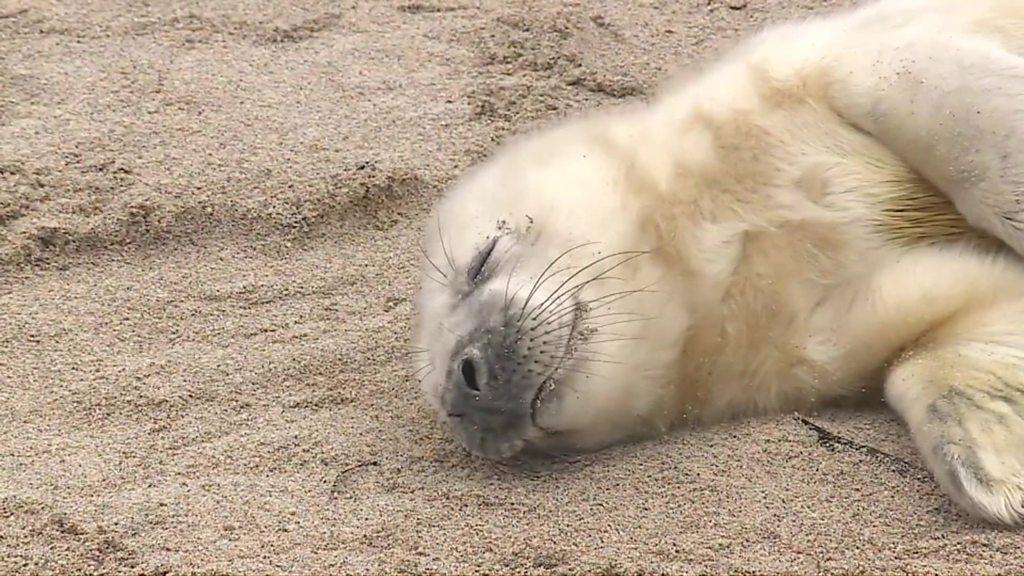Farne Islands seal pup count uses drone thermal imaging
- Published
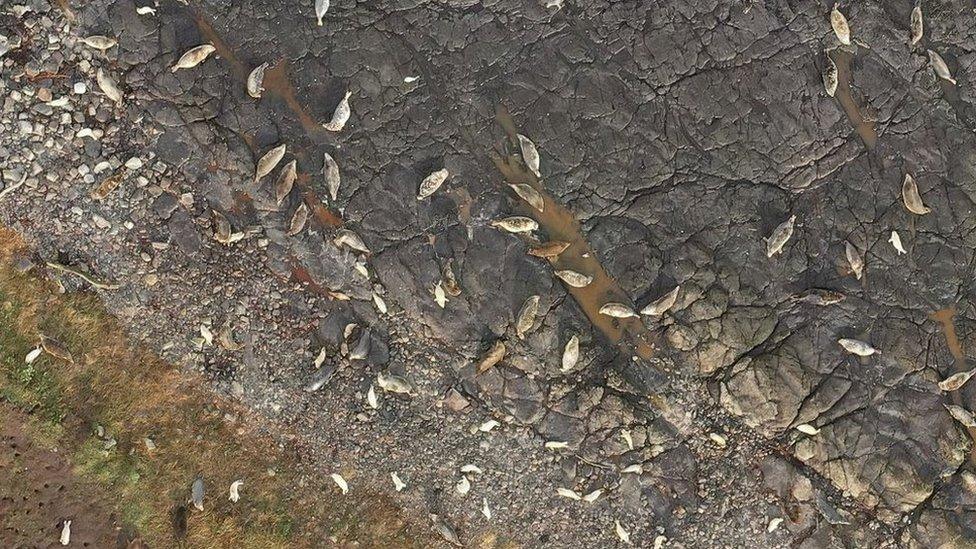
The Farne lslands are host to one of the largest grey seal colonies in England
Thermal imagery from a drone is being used to count the number of seal pups off the Northumberland coast.
The Farne Islands, which are cared for by the National Trust, host one of the largest grey seal colonies in England.
Rangers have traditionally counted pups by foot on the land, but for the past few years have utilised drones.
This year, to boost accuracy they have been fitted with two cameras, one using visibility as with the naked eye and the other using thermal imaging.
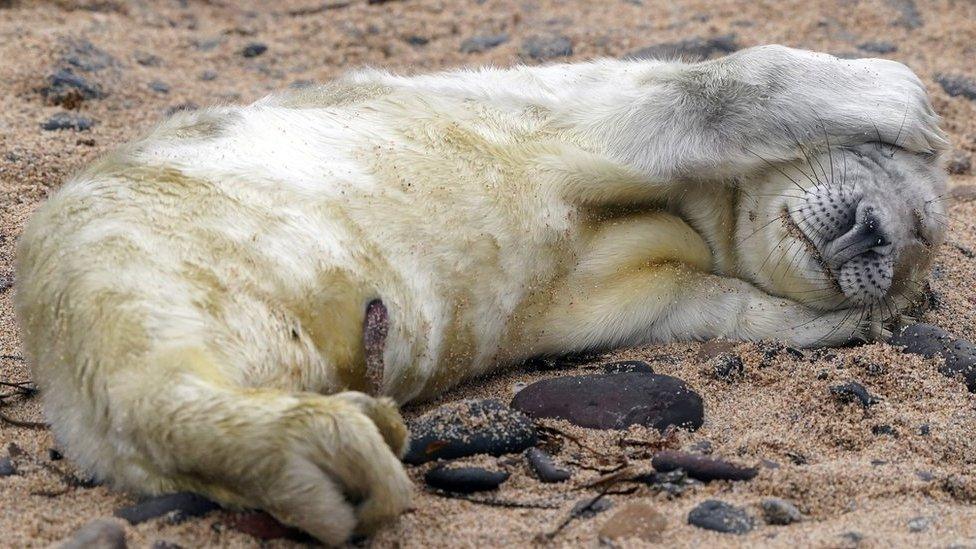
Seals are born with white coats, which grow out to grey
Thousands of adult seals return to the Farne Islands each year to pup - typically giving birth to one pup.
The survival rate varies from year to year but in spite of this, the last recorded seal pup numbers in 2019 reached a record high of 2,823 - an increase of 62% cent over the last five years.
The team was unable to carry out the count last year due to the Covid pandemic but believe that the numbers would have continued their upward trend.
This year, the very first pup was seen on the Wamses - one of the rockier outcrops - at the start of October and this week the first seal pups have been born on the largest island, Inner Farne.
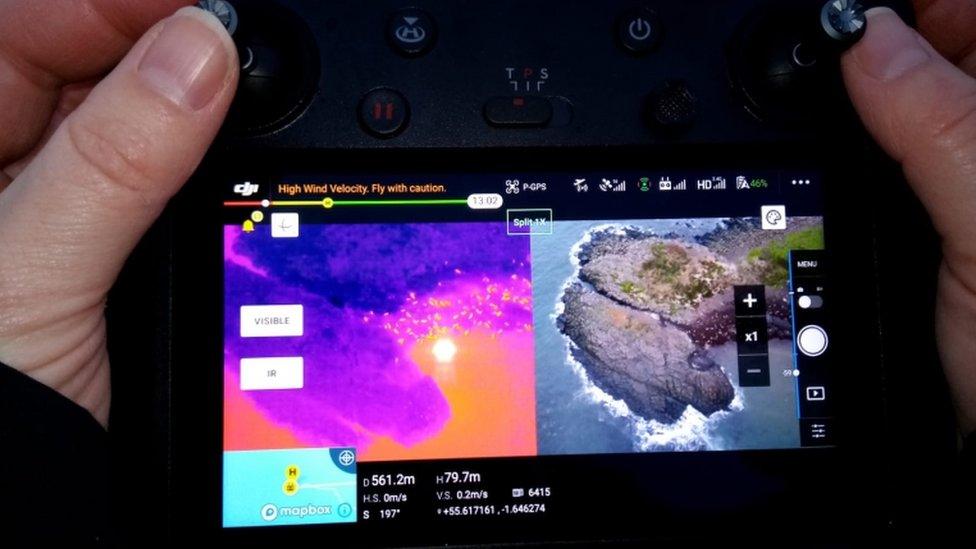
The drones are fitted with two separate cameras
Ranger Thomas Hendry said: "The drone gives us an excellent view of the islands and from the clear images we can count the total numbers of seal pups born on each island.
"It also allows us to see onto the smaller islands more frequently which can be more challenging to visit at this time of year due to difficult sea conditions.
"Having the extra thermal imaging technology is particularly useful now that the islands are supporting more and more pups and the population is denser.
"It will hopefully also allow us to detect any seal pups that sadly don't survive, so that they aren't accidentally included in our numbers."
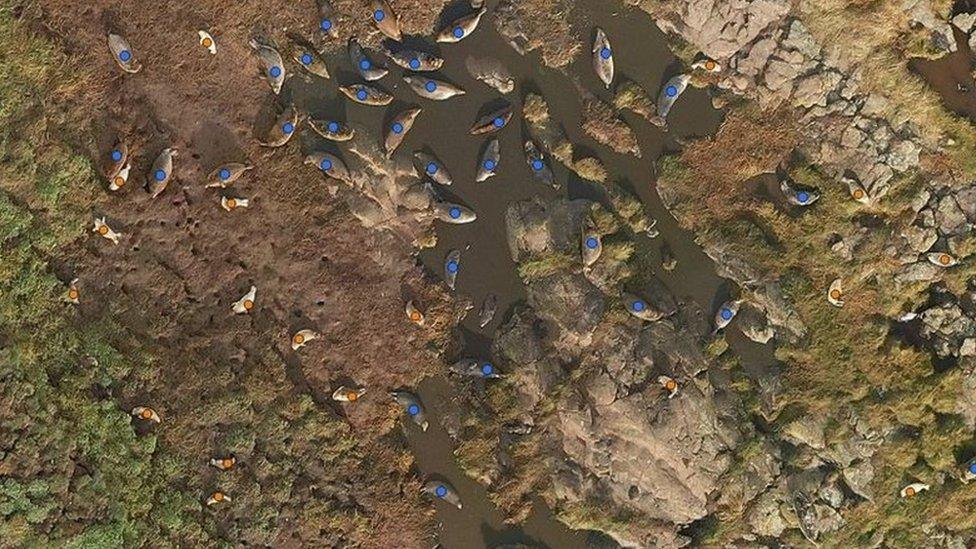
For counting purposes, the blue dots are adult and orange are pups
Mr Hendry added: "The UK is incredibly important for grey seals, as we estimate we have around 44% of the global population.
"Monitoring the growing population is vitally important so that we can manage the island habitats accordingly."
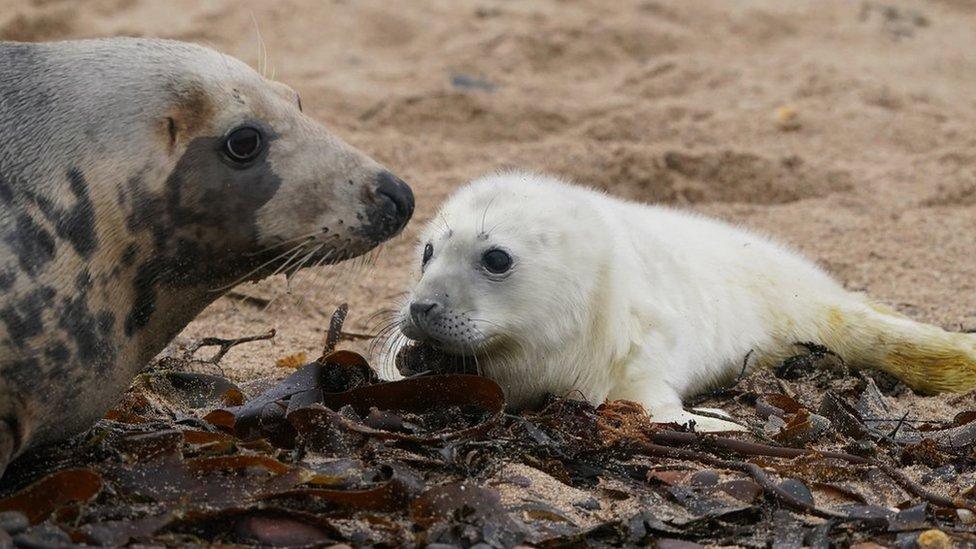
Drones, which were first used in 2018, are less likely to disturb the seals

Follow BBC North East & Cumbria on Twitter, external, Facebook, external and Instagram, external. Send your story ideas to northeastandcumbria@bbc.co.uk, external.
Related topics
- Published3 December 2020

- Published4 December 2019
